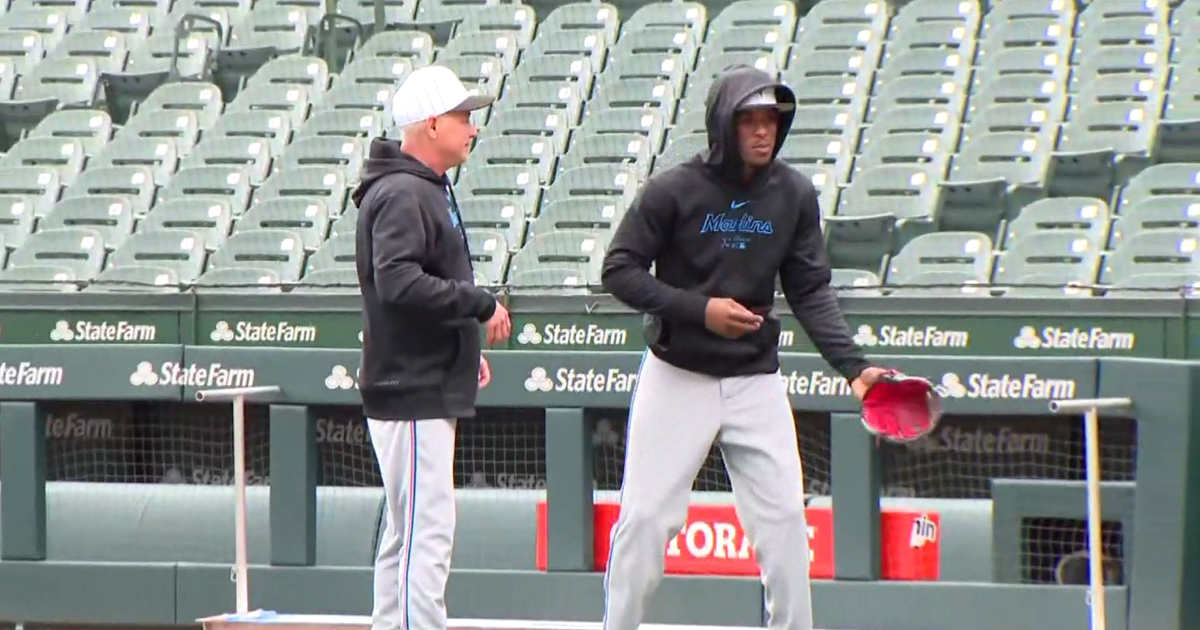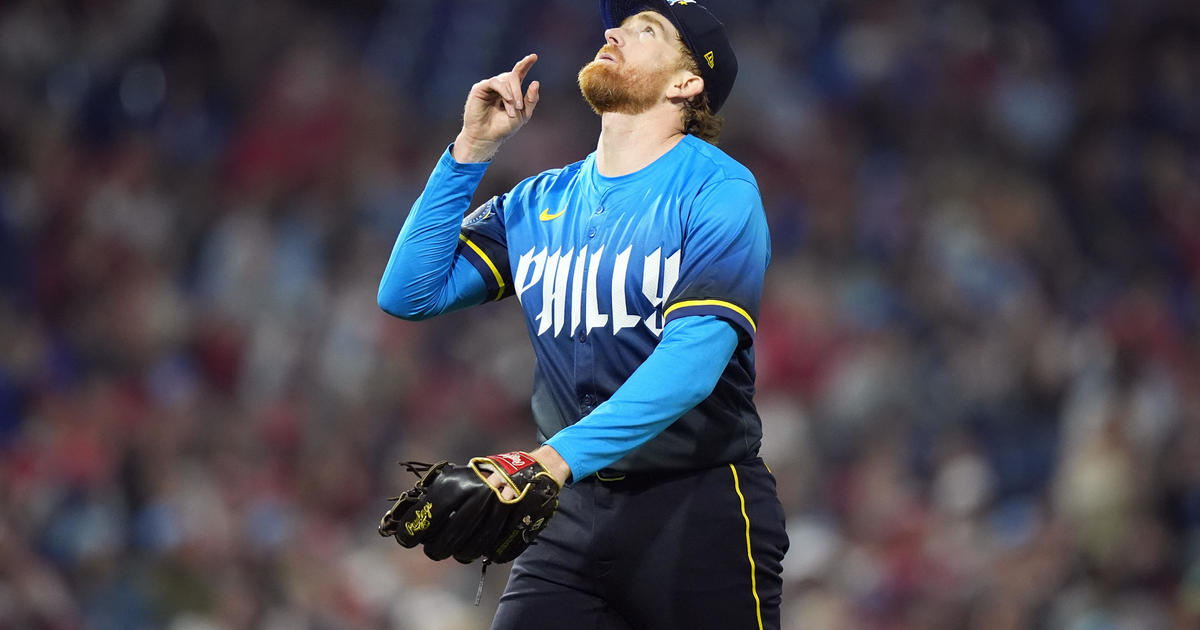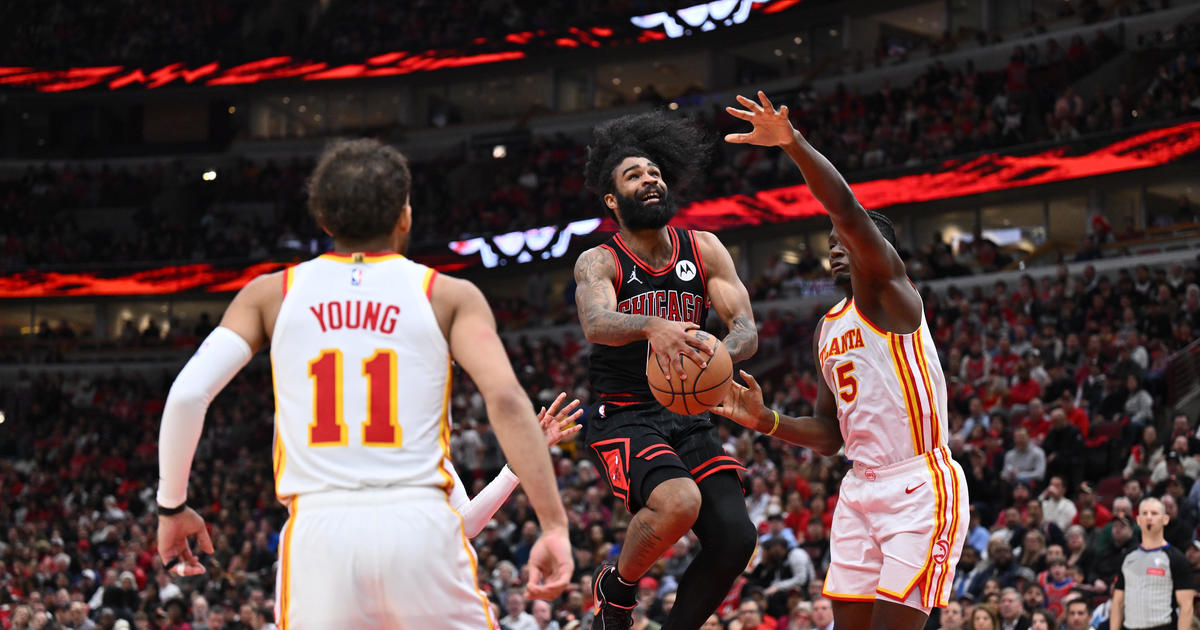Angi: White Sox Should Sell High With Quintana
By Cee Angi-
(CBS) Baseball players that get left off of a team's 40-man roster end up on the minor-league free agent market; most of those players are never claimed and don't play professional baseball again. But once in a great while, an organization can get incredibly lucky with the talent they find in those bins of used players. One team's leftovers can, occasionally, become another team's treasure. That's what happened to Jose Quintana. Now it might be time for another team to discover him.
After the Yankees dumped him in November of 2011, Quintana sat on the market for a week before the Sox grabbed him. It's unclear if the Sox saw something in him or if they were just taking a flier on a young pitcher, but the move looks brilliant in retrospect. Last year, in his rookie season, Quintana was serviceable, though he had some command issues. This season, however, the Sox needed a pitcher who could fill a big vacancy in the rotation due to injuries to John Danks and Gavin Floyd (as well as the eventual departure of Jake Peavy). Quintana silenced the concerns about his ability from the outset, becoming Chicago's second-best starter.
The book is now closed on the 24-year-old's sophomore season, punctuated by Monday's 3-2 victory over the Toronto Blue Jays in which he gave up just two runs in 7.1 innings pitched. This season, Quintana's earned run average dropped to 3.45 from 3.75; he made 32 starts and pitched 193 innings, and would have hit the 200-inning mark were it not for the fact that the Sox have been using a six-man rotation in September.
Quintana set an American League record for no-decisions this season 17, which says more about the run environment he's played in than his ability as a pitcher. From 1996-2012, just four AL teams scored fewer than 600 runs in a season: the 2010 Mariners (513), the 2011 Mariners (556), the 2002 Tigers (575), and the 2003 Tigers (591). Going into Thursday's action, the White Sox had 588 runs with four games to play. Many pitchers would have exhibited frustration -- or been downright angry -- about going so many outings without a win but Quintana maintained his composure and professionalism throughout the season, something that other players and Robin Ventura applauded him for.
Quintana's approach is largely the same as it was last year, with the one exception being that he has deemphasized his cutter—which caused him to nibble and struggle with command—in favor of a changeup, especially when he's ahead in the count. He's also had a slight uptick in velocity on all of his pitches, which is encouraging for a pitcher whose average fastball sits at just 92.1 miles per hour.
Because of the changes in his pitch mix, Quintana is getting results. He's striking out more batters (19.9 percent compared to 14.3 last season), and his walk rate also dropped to 6.7 percent, better than league average (8.0). Quintana has had a change in his groundball-to-flyball rate as well, which dropped from .92 to .77 this season. Given the weak defense behind him, having more fly balls has probably helped him to a degree, but the problem with more balls in the air is often more home runs, and Quintana has seen an increase in balls that left the yard this season as well.
In 2013, the Sox got the best-case scenario with Quintana. He pitched well, he stayed healthy, and he ate a lot of innings, all while earning the league-minimum in salary, but it's impossible to know if his success will continue next season. He could be just as good or even better, but he could also regress, or worse, get injured. Of course that's a question that extends to all pitchers, but for Quintana, he's already pitching against the odds, finding success with a low-velocity fastball and not much else to back it up with. It's reasonable to ask if Quintana reached his upside this season, and, if that's the case, it's the right time to trade him in favor of much needed offensive depth. At the trade deadline I questioned whether the Sox would be better off keeping Chris Sale or trying to get many pieces for him. The counter-argument there was that Sale is so special that there was no package valuable enough to justify a trade, and Hahn and Co. apparently came down on that side. You cannot make the same argument about Quintana, who is obviously good but is also closer to your standard model low-velocity command and control lefty.
Rick Hahn made it clear that the White Sox will think long and hard before trading any of their young pitching talent this offseason because those arms are the only thing that can keep this team competitive long-term. Because of that, the most likely scenario is that the Sox keep Sale and John Danks (who by then will be a year removed from his torn shoulder capsule) at the top of their rotation for next season, but consider moving someone else to fill out the roster. Since Sale and Danks are both left-handed, that probably means that Quintana or Hector Santiago will be the odd-man out, with the team reducing by one lefty in favor of balancing the rotation with some young right-handed talent like Andre Rienzo and Erik Johnson.
If the decision does come down to Quintana or Santiago, the pitcher that could be the most valuable long term is Santiago. In just his third season in the majors, Santiago has proven that he can fill a variety of roles—he's been a starter, a long-reliever, and has worked out of the bullpen— and having a pitcher with the versatility to succeed in any role is invaluable. While Quintana may have been a little better this season, the flexibility that Santiago provides isn't easy to replicate, and that sort of adaptability is critical for a team that is retooling its roster.
Despite his limitations, teams will be interested in Quintana, who is still two seasons away from his arbitration years and will earn just pennies in comparison to what a number-two starter might cost them on the free agent market this offseason. Remember, for a rebuilding team like the White Sox, the extra 3-4 wins above a more pedestrian pitcher (depending on your source, Quintana has been worth between 3.8 and 5.6 wins above replacement; for the purposes of this discussion, we'll guess that the acquiring team is trading up from a pitcher who was worth 1-2) that Quintana would bring won't make very much of a difference to the outcome of their season, but for a team competing for a division title or a wild card, the extra Ws could be the difference between playing in October and going home. That gives a proven pitcher like Quintana value that is greater than his stuff would command in a vacuum.
While the Sox would be assuming their own question marks in trusting Rienzo and Johnson, the organization also has to find a way to field a more competitive roster, and the fastest way to do that is to make assessments about which current players can bring back the highest return without the roster collapsing. In the rotation, that guy is Quintana. He's pitched well enough that the Sox should be able to get a decent return for a player that they saved from the scrap heap. In this case, one team's surplus is another team's starter.
Cee Angi is a freelance sportswriter, whose work has appeared at Baseball Prospectus, The Platoon Advantage, The Classical, and is currently one of SB Nation's featured columnists covering Major League Baseball. Follow her on Twitter @CeeAngi and read more of her CBS Chicago blog entries here.




